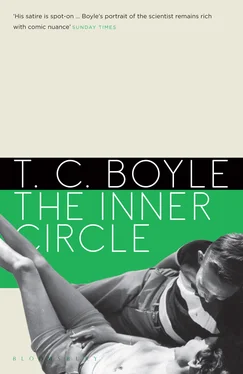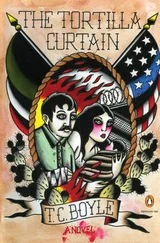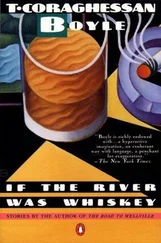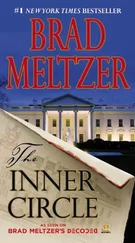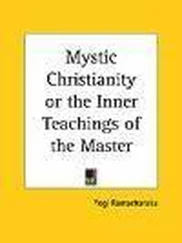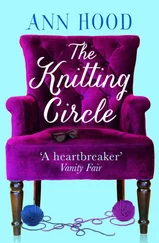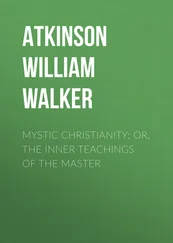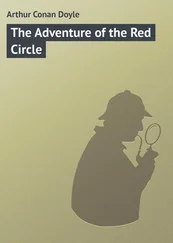T. Boyle - The Inner Circle
Здесь есть возможность читать онлайн «T. Boyle - The Inner Circle» весь текст электронной книги совершенно бесплатно (целиком полную версию без сокращений). В некоторых случаях можно слушать аудио, скачать через торрент в формате fb2 и присутствует краткое содержание. Год выпуска: 2006, Издательство: Bloomsbury UK, Жанр: Современная проза, на английском языке. Описание произведения, (предисловие) а так же отзывы посетителей доступны на портале библиотеки ЛибКат.
- Название:The Inner Circle
- Автор:
- Издательство:Bloomsbury UK
- Жанр:
- Год:2006
- ISBN:нет данных
- Рейтинг книги:4 / 5. Голосов: 1
-
Избранное:Добавить в избранное
- Отзывы:
-
Ваша оценка:
- 80
- 1
- 2
- 3
- 4
- 5
The Inner Circle: краткое содержание, описание и аннотация
Предлагаем к чтению аннотацию, описание, краткое содержание или предисловие (зависит от того, что написал сам автор книги «The Inner Circle»). Если вы не нашли необходимую информацию о книге — напишите в комментариях, мы постараемся отыскать её.
The Inner Circle — читать онлайн бесплатно полную книгу (весь текст) целиком
Ниже представлен текст книги, разбитый по страницам. Система сохранения места последней прочитанной страницы, позволяет с удобством читать онлайн бесплатно книгу «The Inner Circle», без необходимости каждый раз заново искать на чём Вы остановились. Поставьте закладку, и сможете в любой момент перейти на страницу, на которой закончили чтение.
Интервал:
Закладка:
Iris’s voice rode a thin tube of air up out of her constricted throat, even as John Jr. began to hit his stride. “Oh, God, I’ve ruined it. I wrecked the car, I wrecked it, wrecked it!”
“It’s all right,” I told her, though I knew it wasn’t.
“I don’t want to do this, I don’t, I can’t.”
I remember feeling expansive, feeling calm despite myself. I got out of the car, John Jr. still clutched tightly to me, calmly assessed the damage — heartbroken, my first car, my pride and joy — and then leaned in the window to reassure her. “It’s nothing,” I said. “Just a scratch. Nothing a little rubbing compound won’t cure, and maybe a tap or two with the hammer. Really, Iris, it’s okay.”
She sat there rigid, eyes shut, forehead pressed to the wheel. Her shoulders began to quake. Her fingers trembled. She couldn’t seem to breathe. I saw her humbled in that moment, defeated and brought low, and felt everything a man is supposed to feel for a woman. I wanted to protect her, save her, comfort her, and I eased back into the car and took her in my arms, John Jr. reaching out for her at the same time till the three of us just sat there and held the embrace as if there were nothing more to life.
Unfortunately, it couldn’t hold. Three days later — on the Monday — Prok, Aspinall, Corcoran, Rutledge and I took the train for Oregon, where we would shoot nearly four thousand feet of film exhibiting H-behavior among bulls at an agricultural station there. “You see,” Prok would exclaim excitedly as one animal mounted another, “it’s just what I’ve said all along — all our behaviors have their antecedents in nature.”
8
It was a little over a year later, in February of 1950, that we moved into our new quarters in Wylie Hall, another of the venerable old buildings on campus. This time we were given an entire floor to ourselves, albeit the basement, though in all fairness I should say that the basement was partially above ground, so that at least we could stare up into the opaque wire-reinforced glass of the windows and speculate as to whether it was morning, afternoon or evening. Prok oversaw all the details in his usual obsessive way, of course, insisting on the highest standards of fireproofing in order to protect our records and the rapidly accumulating stock of the library, as well as air-conditioning so that we could seal the place off during the hellish Hoosier summers, and sheets of soundproofing to ensure absolute privacy in our interviewing. Each of us had an office to himself now, there was a file room, a darkroom, and for the first time space enough to consolidate the library in one place (with additional room for visiting scholars to consult our holdings without disturbing the workings of the Institute). None of this was particularly grand — we were in a basement, after all, with long, close corridors and exposed pipes running overhead — but Prok would have revolted against anything that smacked in the least of luxury. Still, the university deemed the project enough of a success to sink seventy thousand dollars into the remodeling of the space, and finally, at long last, we had a place of our own, where we could pursue our research as we saw fit, without worry or interference of any kind.
What do I remember most of that time? Boxes. Cardboard boxes stuffed full of books, files and correspondence. For two solid weeks, during the worst an Indiana winter could offer, I traipsed up and down the stairs at Biology Hall, staggered across campus with my arms straining at the sockets, and deposited said boxes in the commodious basement of Wylie. Anyone else would have hired movers, or at the very least, students, but not Prok. He insisted that our records were far too sensitive to entrust to anyone but the senior members of the staff, and somehow the gall wasp collection, the filing cabinets and even our desks, chairs and coat racks fell under that designation too. Corcoran, Rutledge and I packed, moved, unpacked and reordered everything we possessed, and then we stood back and marveled at all the empty space yet to fill.
Ted Aspinall had joined us the previous year, but he was excluded from any of the heavy lifting by virtue of his speciality — he was an artist first, a technician second, and his province was the film laboratory. He moved permanently to Bloomington around this time, arriving with a suitcase of clothes and two trunks of photographic equipment, and immediately set up shop in our new offices (or “laboratories,” as Prok preferred to call them). He’d never been outside of New York City before in his life, and he did seem a bit lost at times, wandering the streets of Bloomington in his dark glasses and trench coat as if he’d gone to sleep on the subway and got off at the wrong stop, but Prok had made him an attractive offer (he came in at a higher salary than I was making, but there was nothing new there, low man on the totem pole as I was and always will be) and his commercial photography — the eternal weddings, bar mitzvahs, graduation ceremonies, the unvarying frozen portraits of grandparents, uncles, cousins, even dogs — had begun to grate on him. He came to Bloomington to stay, and the whole tenor of the project changed to accommodate him. We were no longer an earnest if underfunded seat-of-the-pants operation working out of a warren of cramped dismal offices in the biology building, but a shining enterprise with international recognition, a ready influx of cash and our own full-time staff photographer.
Aspinall didn’t waste any time. Prok budgeted some eight thousand dollars to the purchase of the newest movie-making, processing and editing equipment, and Ted went through the lion’s share of it in a week. Prok was busy everywhere — furiously busy, lecturing, taking histories, posing for photos and sitting for interviews, overseeing the move and the reshelving of the library’s holdings and at the same time puzzling over the data for what would become the revolutionary female volume — and yet he found time to hide away in the darkroom and consult with Aspinall over every last piece of photographic equipment. Film — the rapid frame-by-frame encryption and exposure of animal behavior, from the porcupine to the erotically charged bull to the uninhibited couple in their Florida apartment — this was Prok’s new obsession, and Aspinall was his purveyor.
And, yes, I’m aware of the evolutionary progression here. Aware that the lower animals are one thing, the recording of their habits uncontroversial, educational, salutary even, and the human animal quite another. Perhaps we did go too far. Perhaps some of the critics of what the public was calling The Kinsey Report had a valid point, though none of us saw it at the time. What was it Margaret Mead had said of the male volume? Something along the lines of accusing Prok of being a reductionist, too dour, too scientific — all those statistics and not a single mention of fun, and that was the term she used: “fun.” As if “fun” could be measured or catalogued. And Lionel Trilling, Lawrence Kubie and the rest, denouncing Prok — and by extension, us, me —as championing a mechanistic view of human relations over the spiritual and emotional. I see now what they were getting at, if only narrowly, but still I stand by everything we did — if we hadn’t been rigorously scientific, consummately professional, the whole thing would have been a sham. In any case, I saw the criticism as nothing but a goad, narrow-minded, puritanical, anti-scientific, and to move forward — to progress — we had to ignore it. And so it was only logical that we began to film human sexual behavior.
But let me backtrack a moment here. It wasn’t solely the arrival of Aspinall and the acquisition of all that equipment that pushed us in the direction of live filming, nor simply the evolutionary progression of the project either, but a third factor played into it as well: the ready availability of subjects. For one thing, Betty was in town still, and still willing. I saw her occasionally, driving down the street in a late-model convertible, pushing a basket up the aisles of the supermarket in the starched white nurse’s uniform she’d tailored to fit her lush proportions, and occasionally I stopped to chat with her — we were friends. She was a friend of the research and I a friend of — well, friendly relations. And then there was Vivian Aubrey, the former Columbia student who’d been such a prodigious help to us during our early visits to New York. She was in Bloomington increasingly now, attracted by the aura of Prok’s fame, as were a number of other women (another Vivian, the multiorgasmic Vivian Brundage, comes to mind, a sixty-year-old Philadelphia gynecologist we were to film a number of times with various partners) and men. Always men. Because more and more, Prok craved men.
Читать дальшеИнтервал:
Закладка:
Похожие книги на «The Inner Circle»
Представляем Вашему вниманию похожие книги на «The Inner Circle» списком для выбора. Мы отобрали схожую по названию и смыслу литературу в надежде предоставить читателям больше вариантов отыскать новые, интересные, ещё непрочитанные произведения.
Обсуждение, отзывы о книге «The Inner Circle» и просто собственные мнения читателей. Оставьте ваши комментарии, напишите, что Вы думаете о произведении, его смысле или главных героях. Укажите что конкретно понравилось, а что нет, и почему Вы так считаете.
